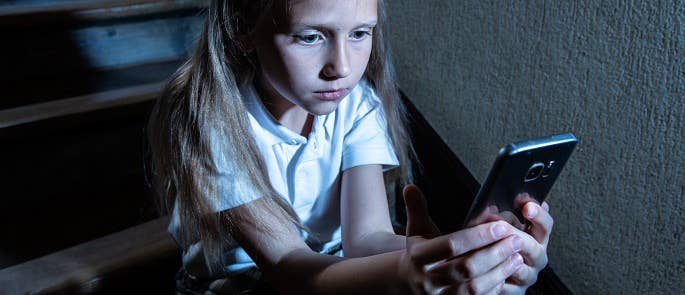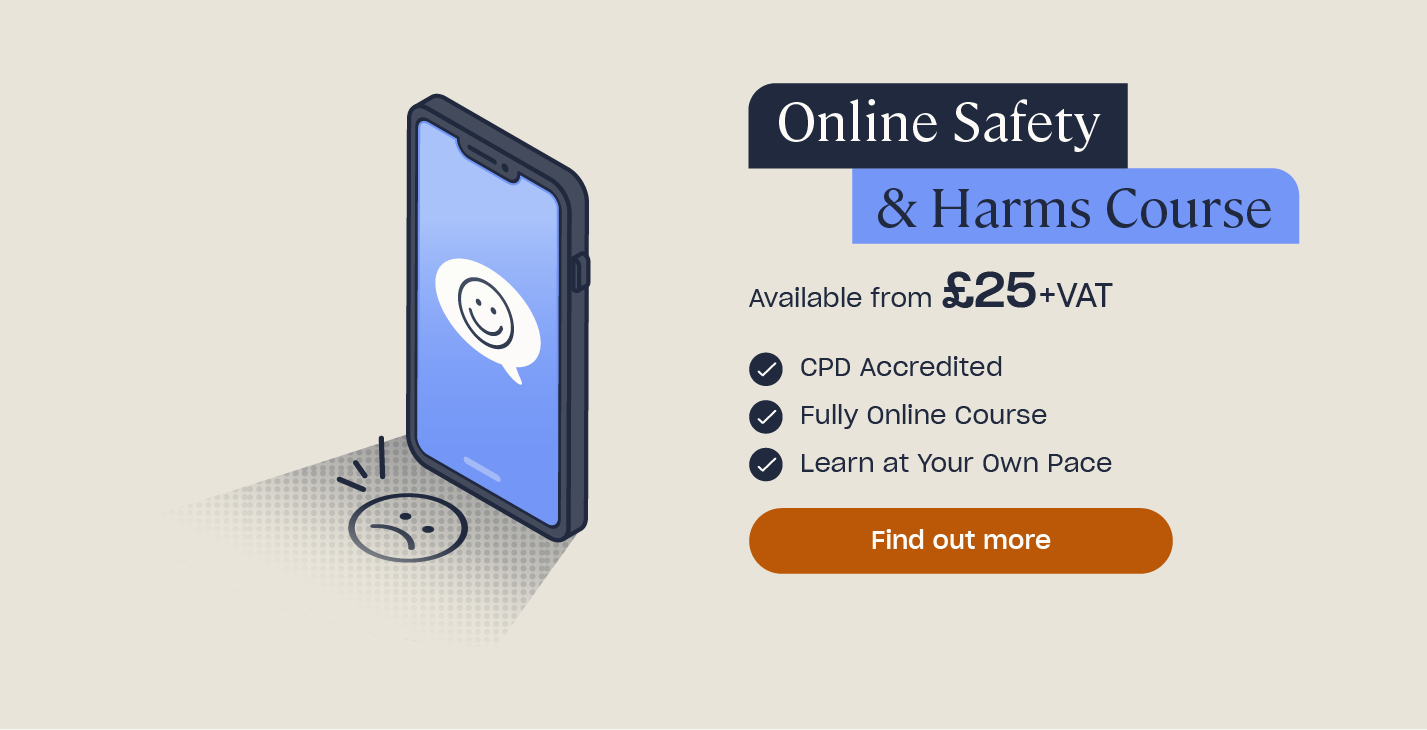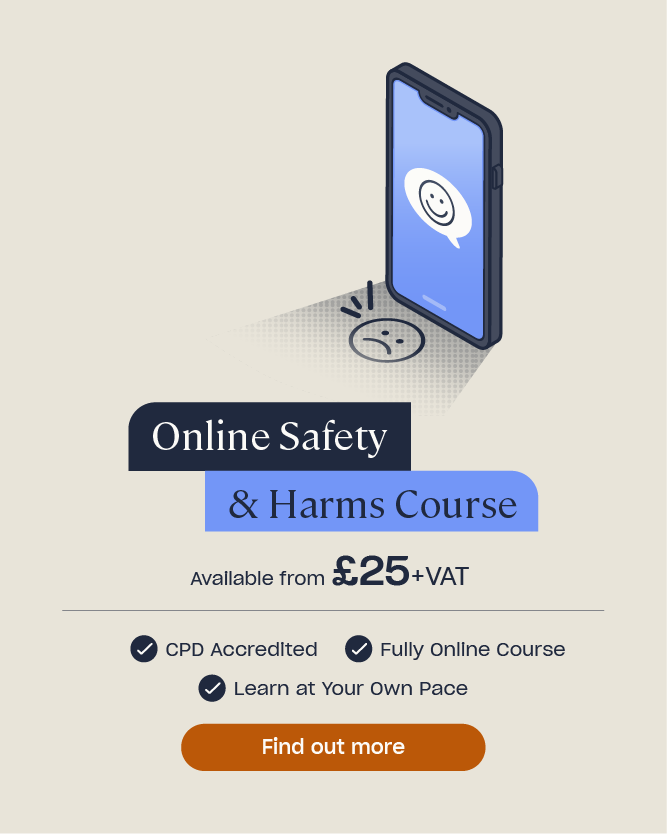How to Respond to Dangerous Online Challenges: Guidance for Schools
The popularity of social media and the internet has led to the development of a new craze: children and young people have recently been completing a slew of online challenges. While many of these challenges are fun and light-hearted, others are harmful and dangerous. As an educator, you may need to face both types in your school or educational setting.
In this article, we will discuss the potential dangers associated with internet challenges, outline the crazes that you should be aware of in order to better support students, and provide advice on how to respond effectively to any challenge-related incidents that occur.

What is an Online Challenge & How Can It Be Dangerous?
An online challenge generally involves an individual recording themselves completing a challenge and distributing the video through social media channels. The challenge is often something difficult or daring, which they then invite others to complete themselves.
After the creation of apps like TikTok, online challenges have become increasingly popular. Different challenges are created every day, and there is a continuous wave of them trending and going viral (being widely and rapidly shared online). Children and young people are constantly exposed to these challenges via their phones and other electronic devices, which can be extremely problematic.
This is because some internet and social media challenges are dangerous. In extreme cases, young people have died attempting them – for example, in the case of Joshua Haileyesus in March 2021 – and others have experienced consequences such as seizures, comas, safeguarding issues, and third-degree burns (for the latter, see Abbie Quinnen, also in March 2021).

Children and young people do not always perceive the risks involved in a challenge, and this – combined with factors such as peer pressure – leads them to complete a task which has the potential to harm them.
However, it is important to stress that not all online challenges are harmful. Some, such as the ASL Ice Bucket Challenge, were created to raise money for a good cause. In fact, the great majority of TikTok crazes revolve around recreating different dances, which is generally risk-free.
Hoaxes
Additionally, some of the most extreme internet challenges are actually hoaxes – those that are deliberately made up and designed to seem truthful. Rumours about these sorts of challenges can spread and cause panic. For example, several years ago ‘blue whale challenge’ was reported to be an online suicide game aimed at teenagers, linked to numerous deaths around the world. However, investigation has revealed that the game didn’t really seem to exist at all.
As a result, you should always do your research and remain level-headed when facing a supposed challenge.

Why are Internet Challenges Popular?
There are a few potential reasons behind the popularity of viral internet challenges, including:
- Socialising. They give children and young people opportunities to socialise with friends in different ways, and give them the feeling of being part of a community. The apps also allow them to make new friends across the world; children often ‘duet’ each other’s videos as a way to interact.
- Getting creative. Online challenges help children and young people to express themselves, try new things, and show off their skills.
- Peer pressure. Young people – particularly teenagers – might feel pressured to join in with online challenges because all their friends are doing it – the challenges might give them a means to become part of the ‘in crowd’. Being able to interact with people across the world could also contribute negatively, as peer groups are now much larger, and young people are looking for mass approval. This is much more difficult to obtain than the approval of a few school friends.
- Social media addiction. Creating posts – including challenge videos – that other people can like, share, and interact with can feed social media addictions. The format of these websites is such that it makes children and young people constantly want more.

Why are Dangerous Social Media Challenges Popular?
Dangerous online challenges might also appeal for other reasons, such as:
- The need to be noticed. Young people often want to stand out from the crowd, and dangerous challenges give them a way to get people’s attention, as well as their validation. With the amount of entertainment freely available online, people now need to go further and further in order to be noticed.
- Impulsiveness. Teenagers are often drawn to risky challenges. Part of being a teenager is testing boundaries, experimenting, and making impulsive decisions. Dangerous challenges might appeal to them simply because of this.
- Defying their parents. Finally, online challenges might be used as a way for young people to kick back against their parents’ rules and suggestions about their lives.
Thinking about these reasons will help you to better understand the logic behind why children get involved in online challenges.
Which Challenges and Viral Crazes Should Teachers Be Aware of?
It is important for teachers to be aware of the online challenges that are currently circulating, as well as their associated dangers, and how they may impact schools. For example, some challenges might be attempted while children are on school premises, or could cause ill spells during school hours. Greater awareness will help you to better fulfil your duty to safeguard children.

Challenges in 2020 and 2021
Potentially dangerous trending social media challenges in 2020 and 2021 include:
- Silhouette challenge – here, an individual films themselves in casual clothes and then the video transitions to a view of their silhouette (while they are either wearing lingerie or nude). The issue with this trend is that some videos have been edited by viewers, allowing them to see more than just the silhouette. They have then been reposted on the internet in this form – an extreme safeguarding issue.
- Nutmeg challenge – this challenge involves mixing large quantities of nutmeg with a drink and drinking it, in an attempt to achieve a high. There can be dangerous side effects to this, including hypothermia, hallucinations, comas, and death.
- Benadryl challenge – here, young people take excessive amounts of medication to try to experience a high or hallucinations. This could lead to serious heart problems, seizures, comas, or death.
- Blackout challenge – this involves temporarily cutting off blood flow to the brain in an attempt to experience light-headedness and euphoria. It is extremely dangerous, and there have been recent reports of children dying after trying it. This trend did not originate on TikTok, and might also be known as the choking game or pass-out challenge (amongst other names).
- #standupchallenge – this challenge involves one individual standing on another’s back while they lie flat on the ground. The person lying on the ground then attempts to slowly stand up, while the second person tries to jump up onto their shoulders and balance there. This could cause serious damage to both people involved, with the potential of breaking necks or damaging spines.

Prior Challenges
In addition to the challenges above (and the creation of new ones), past challenges are sometimes brought back. As a result, it is worth being aware of these challenges too, including:
- Tide pod challenge – in this trend, children consumed inedible laundry detergent pods. These are poisonous and pose serious health risks to anyone who tried it.
- Neck Nominate (or Neknominate) – here, young people are challenged to drink an alcoholic beverage (sometimes mixed with other things, such as household cleaning items) in one go in a dangerous situation, such as jumping off a bridge.
- Kylie Jenner lip challenge – to mimic Kylie Jenner’s full lips, young people have tried putting a glass or bottle over their mouth and sucking out the air, creating a vacuum. This causes their lips to swell and appear fuller, but can also cause pain, swelling, bruising, scarring, and even disfigurement.
Potentially Dangerous Social Media Apps
Whilst it is important to be aware of online challenges, you also need to be familiar with lesser-known social media apps in order to safeguard effectively. These apps are potentially dangerous to children, and some are purposefully masked to appear more harmless than they are.

- Calculator%. This app looks like a calculator but is actually a place where secret photos, videos, and files can be stored.
- Omegle. This is a free online ‘chat roulette’ site where users are randomly paired with strangers to have one-on-one conversations. As well as chatting through text, you can choose to be shown on video.
- Ask.fm. On this app, young people can ask each other questions anonymously and get an answer. It has been linked to severe cases of cyberbullying.
- Sarahah. This is another anonymous app, where users can send anonymous messages to people they may know.
- Whisper. Here, users are encouraged to post and share photo and video messages anonymously, sharing their secrets and meeting new people.
- Wishbone. In this app, users can compare people against each other and rate them on a scale.
- Burn Book. Here, anonymous rumours about people can be posted through audio messages, texts, and photos. Some app stores have now taken this app down.
- Hot or Not. This app allows strangers to rate your profile in the aim of hook-ups.
- Kik. This is a messaging app that allows you to talk to strangers based on your common interests.
If you would like to know more about the more popular social media apps that children are using – including Facebook, Twitter, Instagram, Snapchat, and TikTok – you can read our dedicated articles here.
How Can Schools Help to Keep Children Safe Online?
We have collated eight tips for dealing with viral challenges and crazes effectively.

1. Only share accurate information
Before you take any action or share warnings about viral challenges with parents or colleagues, it is important to do your research. In the past, schools have acted too quickly and inadvertently spread panic about challenges which turned out to be hoaxes, the Momo ‘suicide challenge’ being one such challenge. Searching for evidence in a critical manner helps you to respond proportionately – always check the factual basis of any harmful online challenge using a known, reliable source (such as the Professional Online Safety Helpline).
2. Don’t refer to challenges by name
It is unhelpful (and unrealistic) for teachers and parents to describe a harmful online challenge to children, tell them its name, and then instruct them not to search for it. Rather than reducing the risk of the challenge, this drives curiosity and traffic towards it, causing more people to search for and become aware of it, and a greater likelihood that children encounter it on the internet. In the case of hoaxes, much of the content is actually created by those attempting to give warnings. It can also be needlessly upsetting for children to hear explicit details of these challenges.
Instead, schools should focus on giving general advice and strategies to help children navigate the risks of the internet – encourage children to talk to adults about any distressing content they see, as well as reporting and blocking the content. Talk about how to identify whether a challenge could be harmful, and whether or not it could be a hoax.
Need Online Safety Training?
If you’re unconfident in teaching children how to stay safe online, have a look at our Online Safety and Harms course. It provides you with all the knowledge you need, including how to identify when a child is at risk, what the different safeguarding and cyber security risks are, and how to teach online safety to students.
You could also discuss more generally whether completing online challenges and being popular on social media is important in life. Ask young people to think about whether it is something they could be proud of years in the future, how likely it is that they will become an internet celebrity, and whether putting themselves in danger is worth the risk.
3. Acknowledge peer pressure
Peer pressure is an important factor in young people’s decisions to participate in social media trends – they are often drawn into it because all their friends are doing it. Acknowledging this, explaining that it is unhealthy, and teaching children how to set boundaries and communicate effectively could help to reduce the risk of them being pressured into completing dangerous challenges. Our article on How to Teach Children About Healthy Relationships might be helpful to you here.

4. Keep parents and carers up to date
It is important to ensure that parents and carers are kept in the loop about potential dangers to their child and how to handle them. You could include this information in a newsletter or other regular correspondence to follow up on any information that you have given to the children in school.
Again, don’t refer to online challenges by name, and reinforce that parents should not do this either. Ask them to focus on teaching their children positive, empowering online behaviours such as critical thinking and reporting concerns about harmful content. You could also suggest that parents monitor their children’s online activity (particularly younger children).
5. Give pupils an opportunity to come and talk to you about concerns
You should make it clear that pupils are welcome to discuss their concerns discreetly with you or another member of staff. Being able to talk to you and ask questions will reduce any anxiety that they feel, and if they come to you about a particular challenge, you might be able to stop it from escalating further. Give them a particular time, place, and person in school to go to, and display this information in key areas of the school, such as the lunch hall, toilets, classrooms, and foyer.

6. Have appropriate filters and monitoring systems in place
The statutory guidance ‘Keeping Children Safe in Education’ outlines how schools should have appropriate filters and monitoring systems in place. For example, children should not be able to access harmful or inappropriate material from the school or college’s IT system. Filters may be limited in preventing access to harmful online challenges and hoaxes, but they should always protect children from extreme content.
Your school should also have mechanisms to identify, intervene in, and escalate incidents where appropriate. Find out more about Keeping Children Safe in Education here.
7. Pre-plan your formal response
If you are your school’s designated safeguarding lead (DSL), then you have a responsibility to respond effectively to incidents. This includes those involving harmful online challenges. It would be helpful to plan your response in advance, thinking about your policies relating to child protection, behaviour, staff behaviour, and mobile devices. Protecting children from harmful online challenges is a type of contextual safeguarding.
If any incidents do occur, undertake a case-by-case assessment, establishing the scale and nature of the possible risk, and reporting it to the authorities where necessary. You might find our DSL resource pack useful for further guidance.

8. Be aware of helplines
We have already mentioned the Professionals Online Safety Helpline (POSH), which is available to those working with or for children in the UK who need help with online safety issues.
There are also helplines available to both children and parents or carers – make sure that students and their families are aware of this.
Further Resources:
- Online Safety & Harms Course
- Internet Safety Posters for Schools
- Parents’ Guides to Social Media Apps
- Why is Cyberbullying Harmful and What Actions Can You Take?
- How Much Do You Know About Internet Safety? KS2 Quiz











